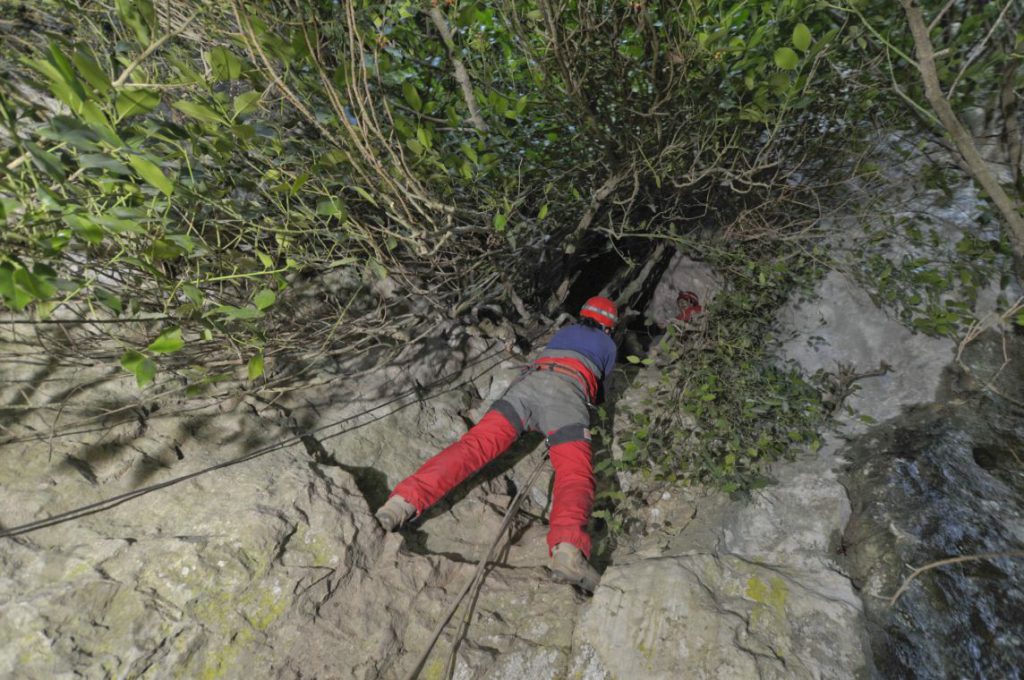15/03/2019
The genomic history of the Iberian Peninsula reconstructed
Marina Lozano and Josep Maria Vergès, IPHES researchers and URV associate professors, contributed with the recovering and anatomical analysis of dental human remains

Marina Lozano and Josep Maria Vergès, IPHES researchers and URV associate professors, contributed with the recovering and anatomical analysis of dental human remains
The largest study to date of ancient DNA from the Iberian Peninsula (modern-day Portugal and Spain) offers new insights into the populations that lived in this region over the last 8,000 years. The most startling discovery suggests that local Y chromosomes were almost completely replaced during the Bronze Age.
The work, published online in Science March 15 by a 111-person international team led by researchers at Harvard Medical School and the Institute of Evolutionary Biology in Barcelona, Spain, also details genetic variation among ancient hunter-gatherers, documents intermingling of ancient Iberians with people from North Africa and the Mediterranean, and provides an additional explanation for why present-day Basques, who have such a distinctive language and culture, are also ancestrally different from other Iberians.
The team analyzed genomes from 403 ancient Iberians who lived between about 6000 B.C. and 1600 A.D., 975 ancient people from outside Iberia and about 2,900 present-day people.
271 of the ancient Iberian genomes had not been published before. Nearly two-thirds came from skeletons no older than 2000 B.C., boosting by 25 times the number of publicly available genomes from this relatively recent period.
Marina Lozano and Josep Maria Vergès, researchers at IPHES (Institut Català de Paleoecologia Humana i Evolució Social) and associate professors at URV (Universitat Rovira i Virgili), both in Tarragona, contributed with the recovery of human remains from different archaeological sites, the crono-cultural context of human remains and analyzing the anatomy of some of the dental remains from which DNA has been extracted. In particular, seven human teeth from Cova dels Galls Carboners (Mont-ral, Tarragona, Spain) dated on Chalcolithic and Bronze Age (3,500-4,300 years ago). Other 4 teeth from Mas Gassol roman site (3rd-Vth centuries CE). Finally, Marina Lozano identified 13 teeth from Cova de la Guineu Late Neolithic site (Barcelona), excavated by a team coming from Seminari d’Estudis i Recerques Prehistòriques (SERP) of the Universitat de Barcelona (UB).

The Institute for Evolutionary Biology is a joint institute of the Spanish National Research Council (CSIC) and Pompeu Fabra University in Barcelona.
Major funders of this research included Obra Social La Caixa, FEDER-MINECO (BFU2015-64699-1118P), the National Institutes of Health (grant GM100233), the Paul G. Allen Family Foundation and the Howard Hughes Medical Institute.
About Harvard Medical School
Harvard Medical School has more than 11,000 faculty working in the 11 basic and social science departments comprising the Blavatnik Institute and at the 15 Harvard-affiliated teaching hospitals and research institutes: Beth Israel Deaconess Medical Center, Boston Children’s Hospital, Brigham and Women’s Hospital, Cambridge Health Alliance, Dana-Farber Cancer Institute, Harvard Pilgrim Health Care Institute, Hebrew SeniorLife, Joslin Diabetes Center, Judge Baker Children’s Center, Massachusetts Eye and Ear/Schepens Eye Research Institute, Massachusetts General Hospital, McLean Hospital, Mount Auburn Hospital, Spaulding Rehabilitation Network and VA Boston Healthcare System.
Reference: Iñigo Olalde et al. “The genomic history of the Iberian Peninsula over the past 8000 years”. Science. 15 Mar 2019: Vol. 363, Issue 6432, pp. 1230-1234. DOI: 10.1126 / science.aav1444
